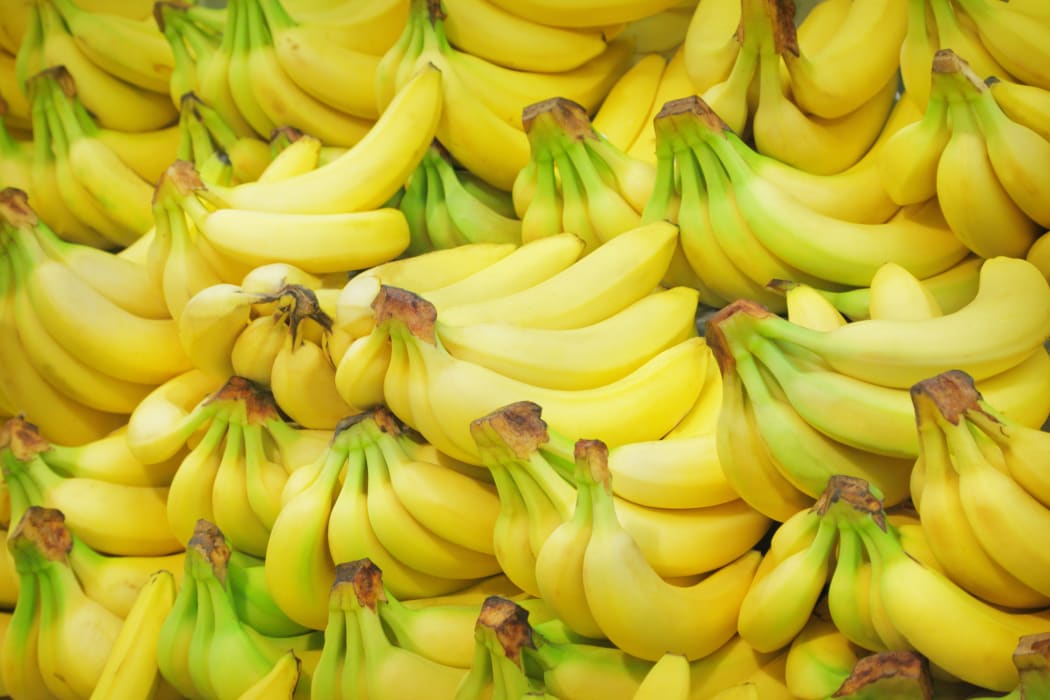The first banana we know of was planted in NZ in 1890, but now days there are countless varieties of bananas and all sorts of wonderfully exotic fruits growing here and the long hot sunny days we're having now promise an excellent bounty.

Photo: 123RF
Chair of Tropical Fruit Growers Hugh Rose has an impressive stable of interesting and exotic fruits growing on his Northland property.
Rose, whose background is farming, is based in Maungatapere, just west of Whangarei.
He moved into his subtropical paradise just over four years ago, when it was just a mixed bag of bush, rock-laden soil, clay and a bit of very decent volcanic soil.
Bananas are the mainstay of the subtropical and marginal tropical fruiting plants and trees Rose has growing on his property.
His is an avid collector, having over 40 varieties, which he diligently sourced from people’s gardens over the years.
These had been shipped in decades ago, before the Ministry of Primary Industry’s Plants Biosecurity Index rules applied to importing seeds and plant materials.
One is the variety Musi luki, is now widespread in New Zealand which Rose says has its origins in India.
“Basically, there are four groups of edible bananas, which are the plantain, generally used for cooking. Lady fingers, which are usually thin-skinned and slightly different, and then you’ve got the cavendish, which were, believe it or not, developed in Kew Gardens in England by Lord Cavendish.
“Then of course you have false or Ethiopian-type bananas. Again, there are hundreds of variations of each of these types of bananas.”
Compared to other parts of the world New Zealand has a limited genetic pool of bananas, he says.
“There are research stations around the world and they cross-breed and cross-breed until you get the perfect banana and then on to another one.”
Some rare varieties in New Zealand sell for thousands of dollars on Trade Me, but Rose still prefers to trade his for the right plant in return.
“The royal Hawaiian is a classic – a stunningly beautiful plant that is painfully slow-growing. It’s tropical, so definitely grows better indoors than outdoors. It has a purple seam and stem to the leaves. They’ve got stripped fruits, I won’t say variegated, but green and white.
“I’ve got several of these bananas as clumps. I don’t sell them I only swap them, but I did see one going the other day for $9,999.”
Rose started his plantation of subtropical and tropical fruits only a few years ago, but has since amassed an impressive array of mouth-watering varieties, even managing to grow dates.
“We planted out a patch here that started four years ago when we bought the block… the land’s geologically challenged, so everything we do is 'poke and hope'.”
Nevertheless, Rose has managed to grow many impressive amounts of fruit.
These include pineapple, pawpaw, the prolific and juicy babaco, capuli cherries, and the cactus-like and unusual dragon fruit, which needs a growing structure to climb up. Other varieties on the block include sugar cane, rose apples, mangos and the prized, but slow-growing jaboticaba, or Brazilian grape tree.
“The jaboticaba is like a large black grape, very tasty,” he says.
Tropical fruits need lots of sun and a frost-free environment to survive and thrive. But it’s not just the winterless north that can offer those types of growing conditions.
With a bit of greenhouse care, other regions can sustain these plants and trees, Rose says.
“Vitamin D is the most important thing for anything really. There’s heaps of that down in Alexandra. Alexandra has got the best sunlight hours of the lot.
“So, if you put a tunnel house up to protect from the frost in winter you’re going to get really good crops of pineapples and bananas whatsoever.
“In Iceland they have six months of sunshine per year, but they actually grow commercially successfully bananas undercover and keep the feet [of the bananas] warm with thermal activity.
“I send plants all over the country and there’s some really nice people down in Invercargill growing Cavendish of all things. They just protect them, wheel them in and wheel them out in huge containers. They’re doing well.”

